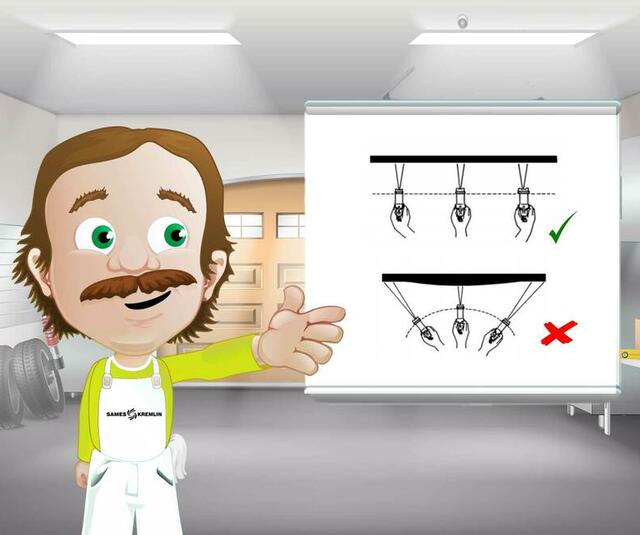► How to use a paint sprayer?
How do I adjust my professional spay gun?
Hereafter are the main guidelines and things to know for a quick and easy adjustment of your spray gun to help you solve most common issues and produce even coverage and quality finish with minimum overspray with your paint spray gun model (true also for any diy applications).
- Spraying fineness: It is realized by the central air. The air is adjusted by means of the air regulator mounted upstream of the gun on the network and more finely by the knob at the bottom of the gun handle of some manual guns
- Fan width: Can be adjusted by using the knurled knob. It will control spray width by regulating the air going to the horns on the aircap . In this way, the air is controlled through the fanned air outlets and allows the fan to change from flat (wide open) to round (closed).
- Fluid output: Having selected the proper fluid nozzle / needle size assembly and the fluid pressure, it is possible to further control the output by changing the travel of the needle
How do I use my manual spray gun for great results in every application (exterior and interior application, furniture cabinets, cars...)?
When mounting the aircap on the gun, hold it vertically in order to correctly adjust the aircap before screwing the aircap ring. Keep your distance consistent to the part when spraying.

1. The good way: Hold the gun approximatively 20cm/8 inches from, and perpendicular to the surface you’re spraying.
Spraying from a stationary gun will not give you even coverage, avoid working with the wrist but move your arm while keeping the gun pointed straight at the surface being painted for an uneven finish. Instead, flex your wrist slightly at the beginning and end of each stroke to maintain proper gun position and you will see the improvement!.

2. The wrong way: If you don't maintain uniform distance and flare out at the beginning or end, the spray pattern will start wide, then narrow and finally end wide.
We recommend you only work within the area you can easily reach while maintaining proper spray gun position. To avoid excessive material at the beginning and end of each stroke, always have the gun moving before you pull the trigger, and continue your stroke after you release the trigger. To ensure an even amount of paint on the surface, overlap each spray pass by 50 percent. To achieve the proper overlap, aim the spray gun so that the tip points at the edge of the previous spray pass. When spraying on broad, open surfaces such as ceilings and bare walls, spray the outside edges first; then spray the middle. For home applications, spraying with a spray gun will give a higher finish than when spraying with a brush roller and a better control than with an aerosol for fences as an example.
For complex part shapes and hollow parts, aim the spray gun to apply directly into the corner, spraying each of the adjacent walls that form the corner evenly and in one pass.
How do I solve most common issues?

Read our tips for spraying successfully:

Distorted spray: slightly unscrew the aircap retaining ring and rotate the aircap by one half turn. If the defect is reversed, one of the lateral air holes is plugged up or deformed. Clean the gun aircap with solvent and unclog the air holes with a compressed air. If the defect is not reversed, it means that the fluid nozzle is damaged.

Displaced spray: this comes from a defect in the central fan. Clean the aircap and the fluid nozzle. Make sure that the aircap is correctly centered on the nozzle, the nozzle is not too big for the needle, when work is done with a large needle opening and the needle almost closed, the spray pattern is not even in all directions.
 Fragmented pattern: the fan air pressure is too high at the holes in the air cap horns :turn the fan air control clockwise to reduce the fan air pressure and increase the paint output.
Fragmented pattern: the fan air pressure is too high at the holes in the air cap horns :turn the fan air control clockwise to reduce the fan air pressure and increase the paint output.
 Fan too thick in the center: this is the reverse of the above defect : the paint output is too high for the selected air pressure : increase the spraying air pressure and reduce the paint output., if the paint is too thick, dilute it.
Fan too thick in the center: this is the reverse of the above defect : the paint output is too high for the selected air pressure : increase the spraying air pressure and reduce the paint output., if the paint is too thick, dilute it.
 Intermittent spray pattern: an air inlet in the paint circuit creates an intermittent pattern when : the paint cup is nearly empty, when the nozzle is not tightened on its seat : clamp it. If the problem persists, remove the nozzle and do a careful cleaning. Check that the seat and the cone are not damaged, remove the nozzle and clamp it. Check that : the cup cover air hole is not blocked and the paint is homogeneous and fluid enough (use the viscosity cup). Check that the ‘pressure’ gun is not used with a ‘suction’ cup.
Intermittent spray pattern: an air inlet in the paint circuit creates an intermittent pattern when : the paint cup is nearly empty, when the nozzle is not tightened on its seat : clamp it. If the problem persists, remove the nozzle and do a careful cleaning. Check that the seat and the cone are not damaged, remove the nozzle and clamp it. Check that : the cup cover air hole is not blocked and the paint is homogeneous and fluid enough (use the viscosity cup). Check that the ‘pressure’ gun is not used with a ‘suction’ cup.
We advise you to consider watching our How to videos to become comfortable with the spray techniques that produce the best quality finish for your pro jobs. Of course, specific requirements may be considered if you use HVLP paint sprayers (less than 10 psi at the aircap), airless high pressure paint sprayer, Airmix pressure guns or electric paint spray gun models (wagner or graco painting solutions kits for outdoor application jobs for example)
You want additional informations?
Please also check advice options given by your coating manufacturer, make sure to get the required air volumes needed, the right filters for your paint (solvent or water based)! Make sure also to use the required tools to maintain your paint sprayer.
Visit our website for more information which includes our painting solutions machines and products items specifications reviews, warranty and much more!







